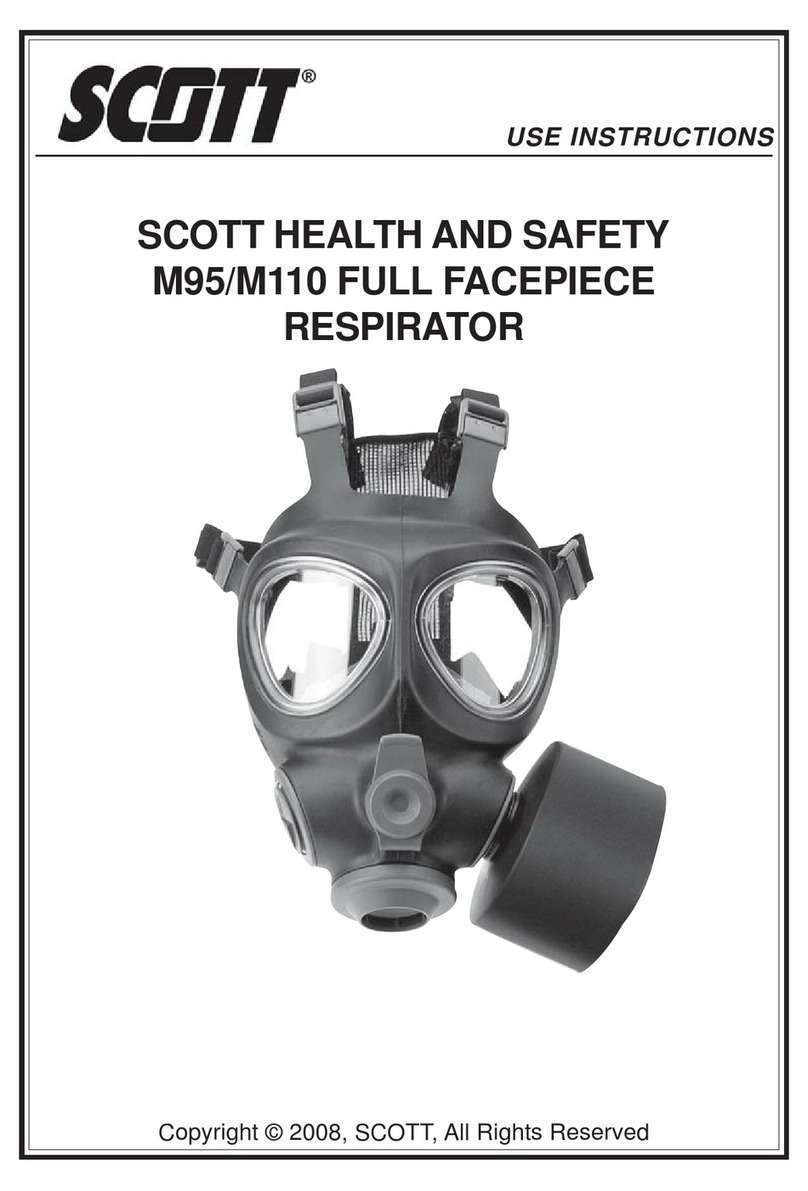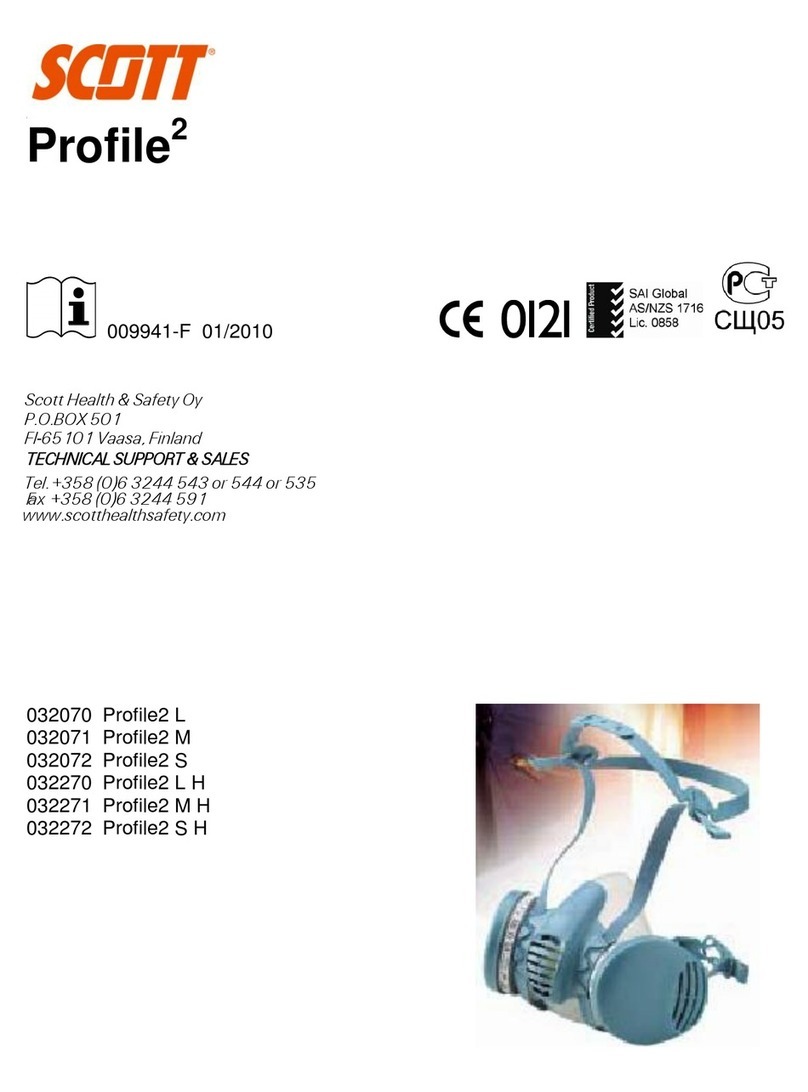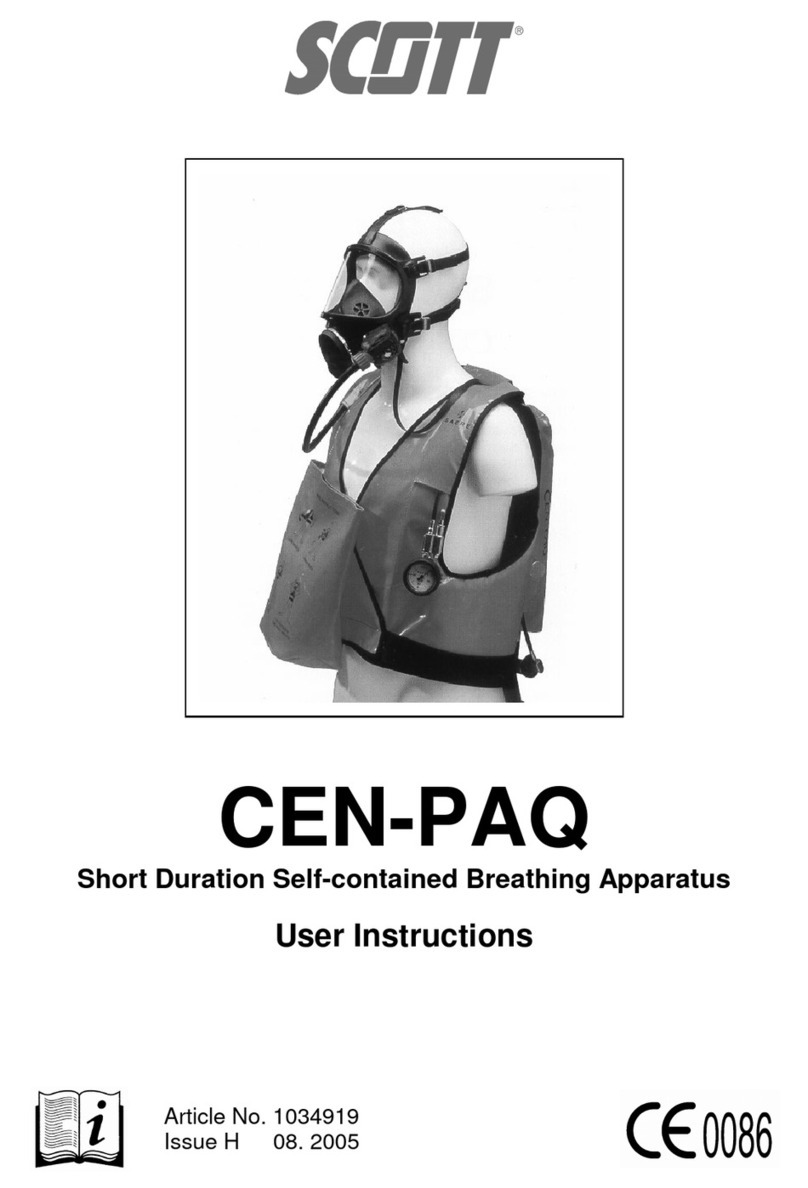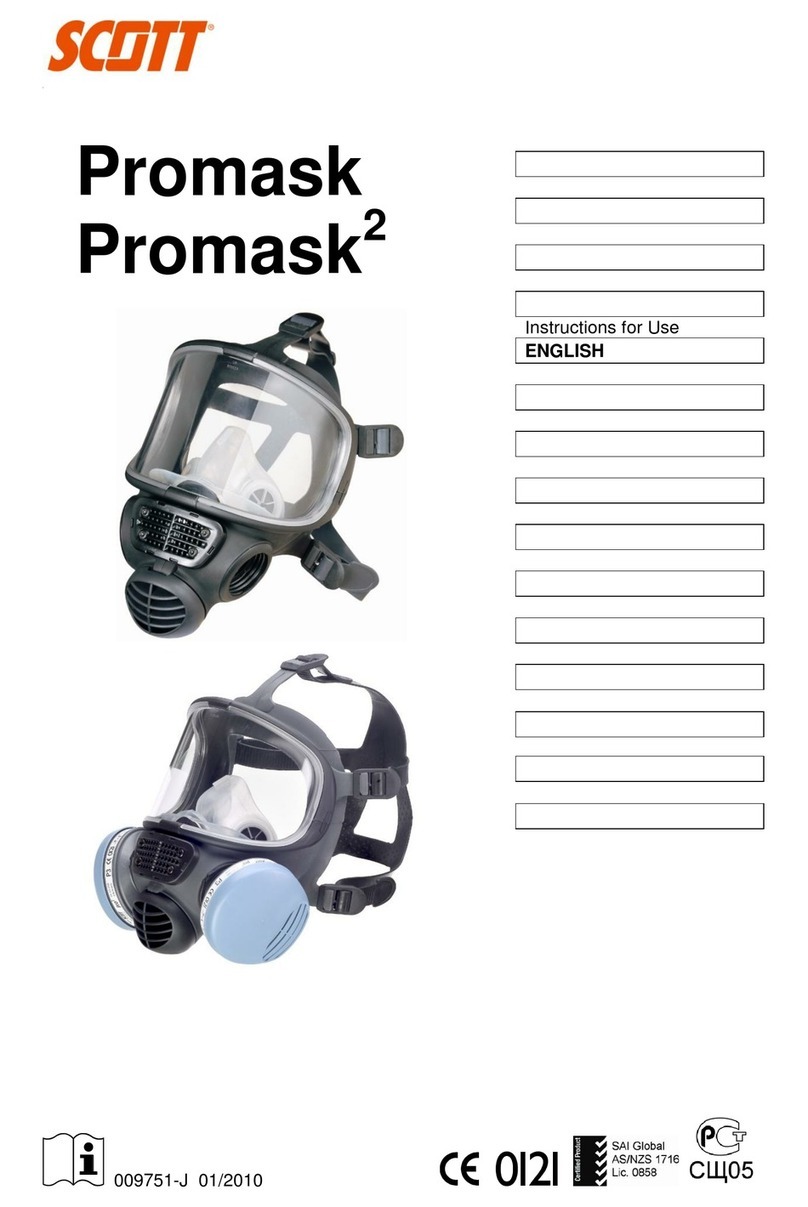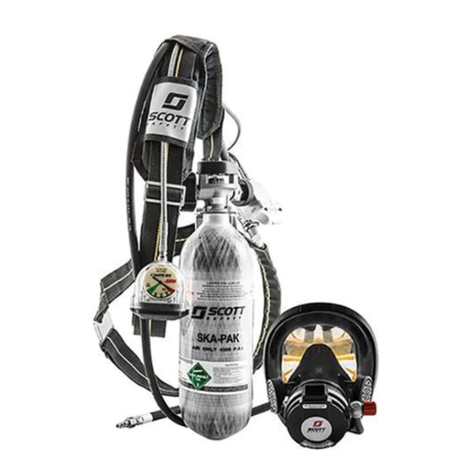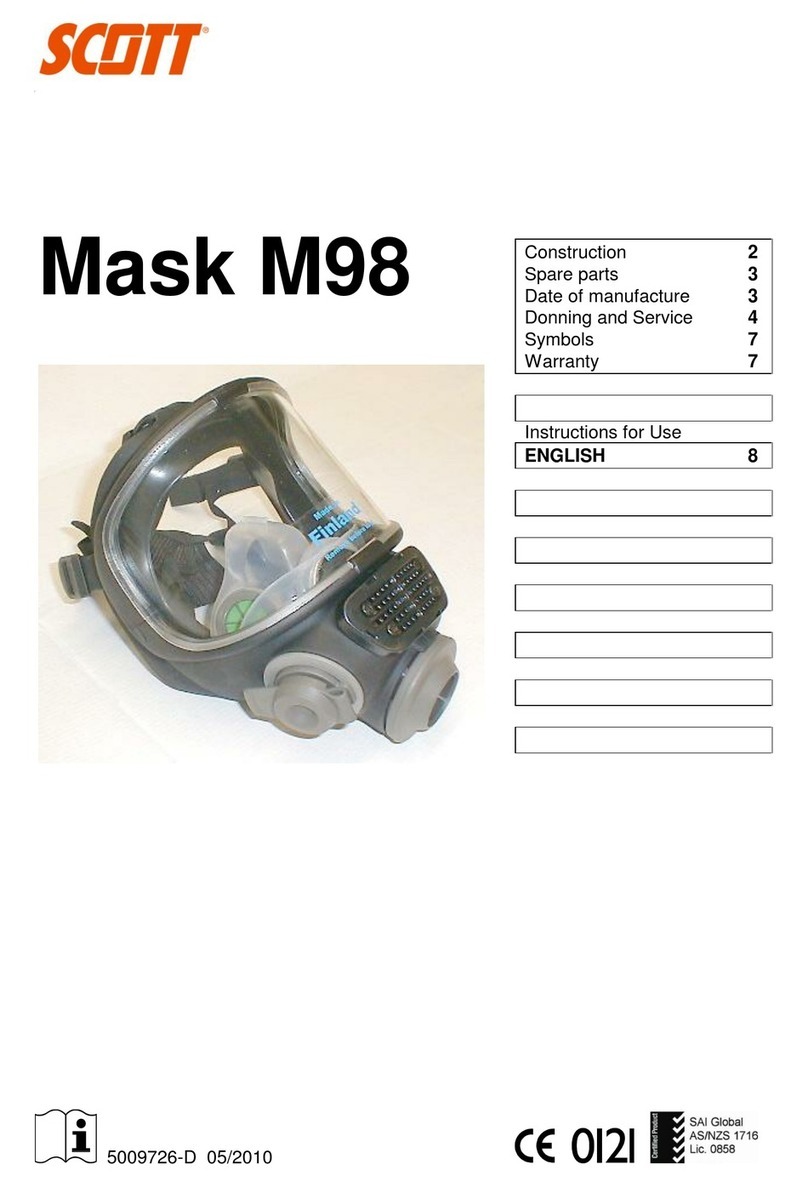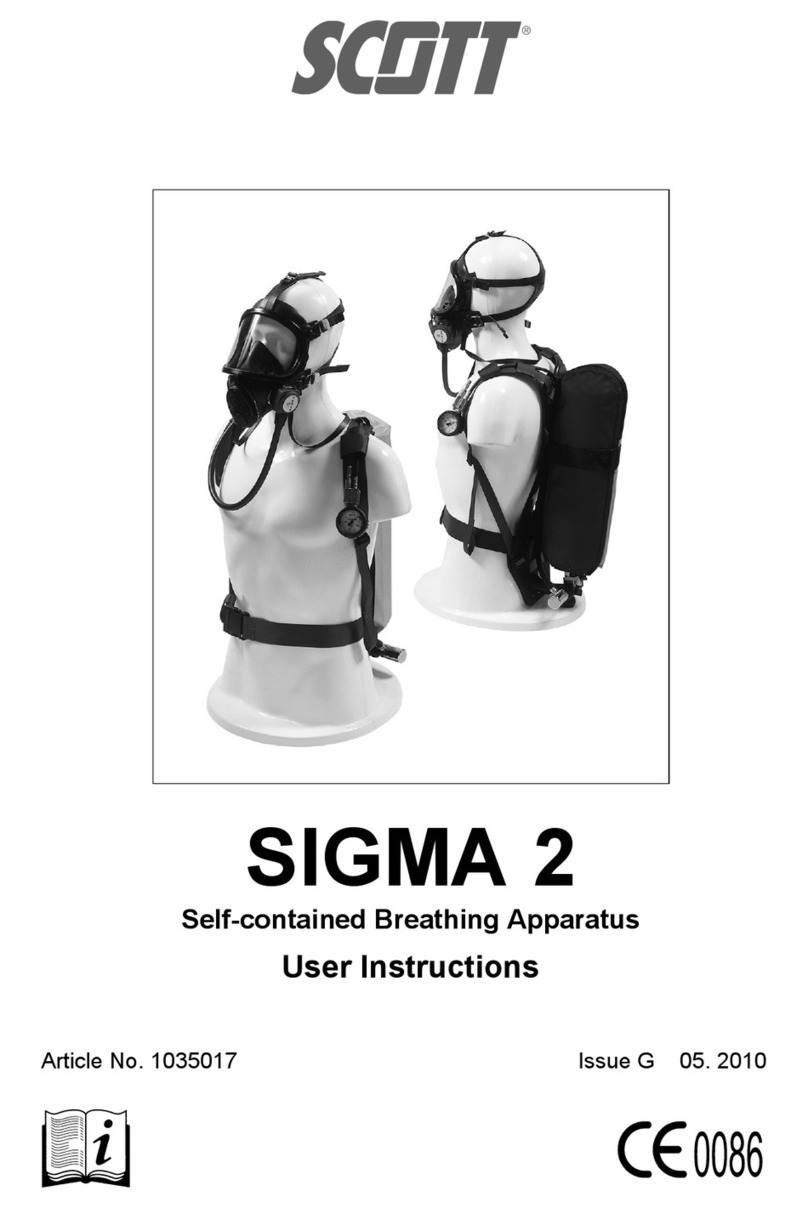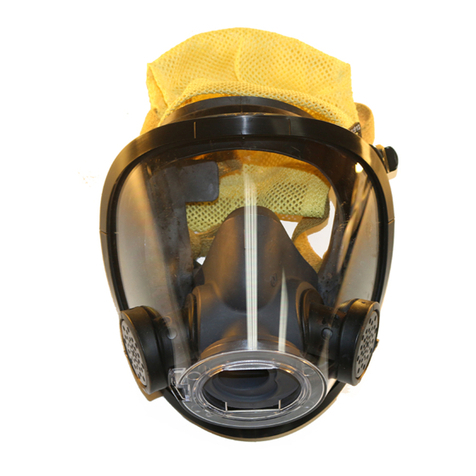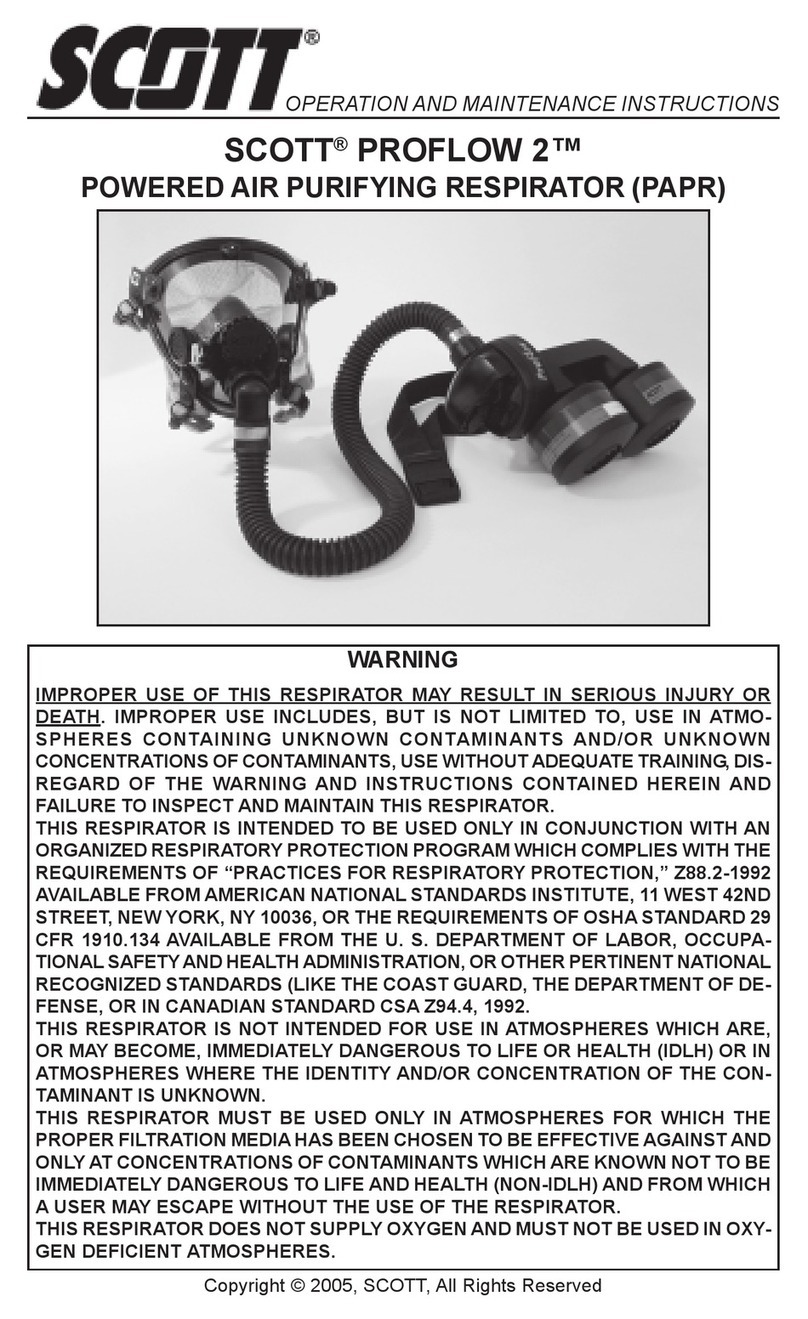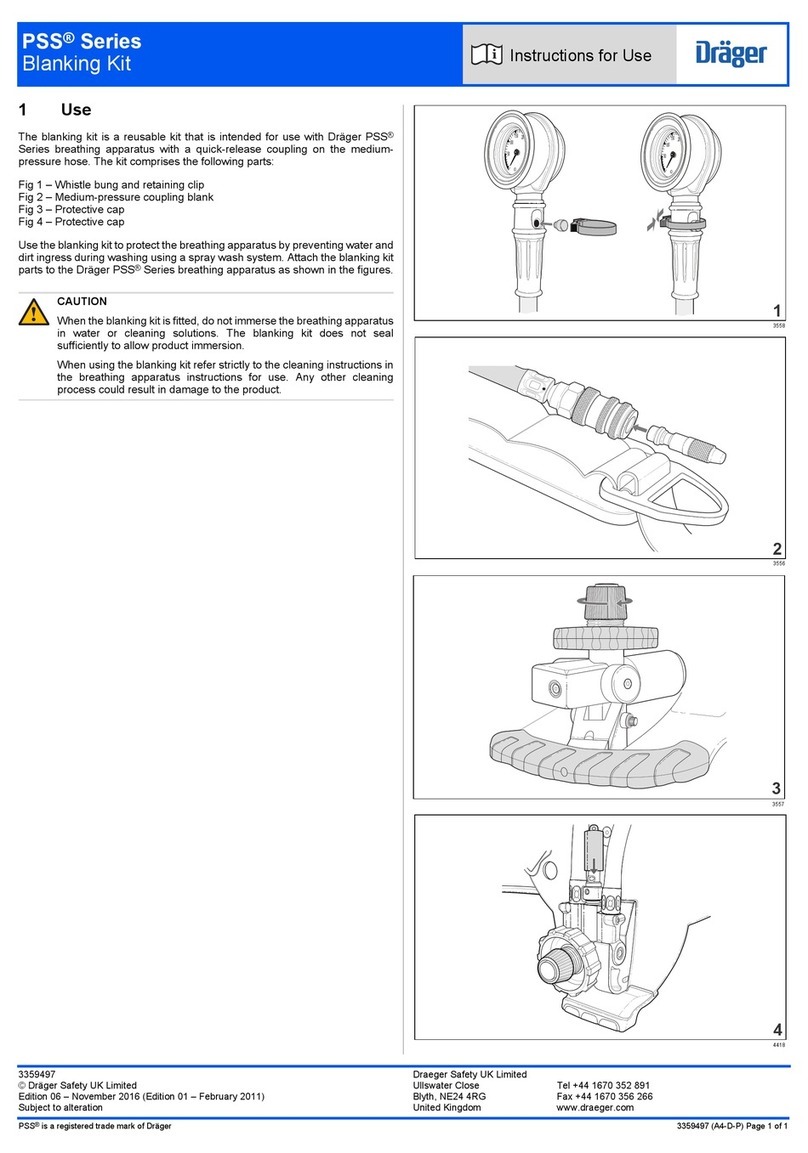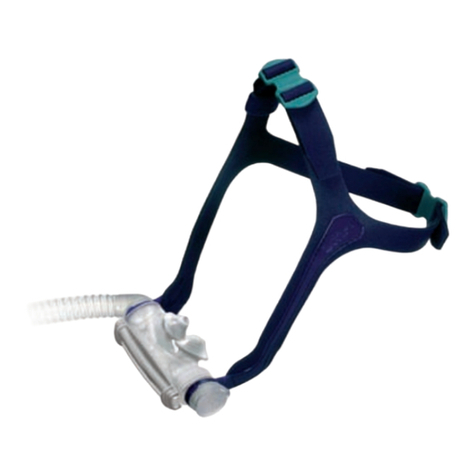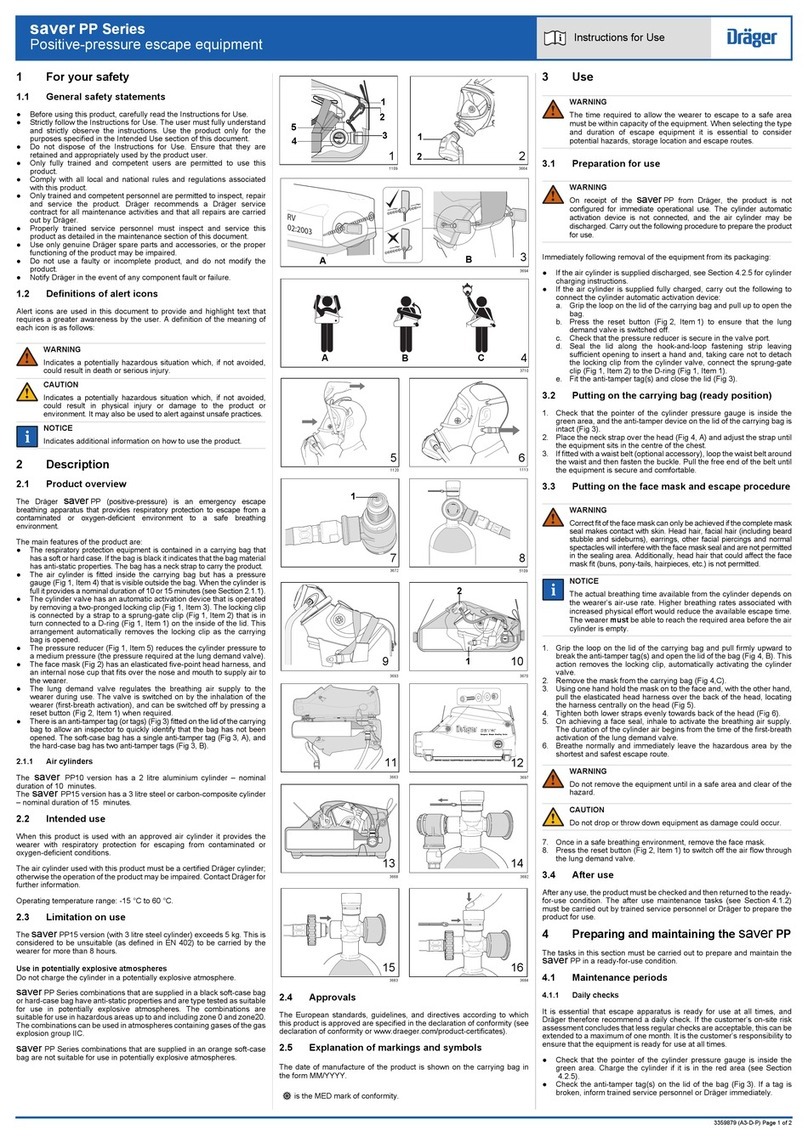
Page 10 of 36 P/N 595225-01 Rev C 4/12
NOTE
DO NOT LIFT, TRANSPORT, OR HOLD THE
CYLINDER BY THE HAND WHEEL.
AIR CYLINDER INSTALLATION
The SCOTT RIT-PAK III portable air supply is available in three pressure models for use
with the following air cylinders:
• RIT-PAK III 2216 psi for use with SCOTT 2.2 cylinders with an air supply
rated at 30 minutes.
• RIT-PAKIII4500psiforusewithSCOTT4.5cylinderswithanairsupply
ratedat30,45,or60minutes
• RIT-PAKIII5500psiforusewithSCOTT5.5cylinderswithanairsupply
ratedat30,45,60,or75minutes
Other cylinders may be used provided:
• theymatchtheairpressureratingthatthemodelwasdesignedtouse,
• theydonotexceedthesizecapacityofthecarryingbag,
• they are equipped with the proper CGA fitting to attach to the cylinder
coupling. NOTE
USE ONLY BREATHING AIR CYLINDERS THAT FIT IN THE CARRYING BAG.
IF THE CYLINDER DOES NOT FIT FULLY IN THE CARRYING BAG, DO NOT
USE THE CYLINDER.
CYLINDER INSTALLATION
Install the cylinder and valve assembly in the RIT-PAK III portable air supply as follows:
1. Open the top of the carrying bag by releasing the hook-and-loop fastener
strips on the pressure reducer compartment and on the long edge of the
cylinder compartment cover.
2. Loosen the two cylinder straps by lifting the ends and releasing the hook-
and-loop fastener and lay the ends of the straps out each side of the bag.
3. Inspect the equipment and verify that it is in suitable condition for use. Refer
to the REGULAR OPERATIONAL INSPECTION of this instruction. If any dam-
age is found, remove the unit from service and tag for repair by authorized
personnel.
CYLINDER INSPECTION
1. Check the latest cylinder hydrostatic test date to ensure it is current. All breathing
air cylinders used SCOTT respirator equipment must be visually inspected regularly
and hydrostatically tested by a licensed cylinder re-tester in accordance with the
appropriate US Department of Transportation (DOT) specification or applicable DOT
exemption, or in accordance with the appropriate Transport Canada (TC) Permit of
Equivalent Level of Safety. For a complete listing of retest date requirements, refer
to the current revision of Safety Precautions for AIR-PAK Cylinders, Scott P/N 89080-
01, available on request from Scott Safety. Composite cylinders (those cylinders
utilizing fiber over wrap) must be tested in accordance with the DOT exemption
status up to the maximum life of fiber over-wrapped cylinders which, at the time of
thepublicationofthisinstruction,is15yearsfromthedateofmanufacture.Thedate
of manufacture marked on the cylinder is also the date of the first hydrostatic test.
It is the responsibility of your organized respiratory protection program to arrange
for visual inspection and hydrostatic testing of cylinders by a licensed re-tester.
2. Visually inspect cylinder and valve assembly for physical damage such as dents
or gouges in metal or in composite wrapping. Cylinders which show physical
damage or exposure to high heat or flame, such as paint turned brown or black,
decals charred or missing, pressure gauge lens melted or elastomeric bumper
distorted, and cylinders which show evidence of exposure to chemicals such
as discoloration, cracks in the cylinder or the composite wrapping or gel top
coat, peeling of the outer layers of the composite wrapping and/or bulging of
the cylinder wall, shall be removed from service and emptied of compressed air.
Refer to current applicable publications on compressed gas cylinder inspection
available from Compressed GasAssociation Inc., 1725 Jefferson Davis Hwy.,
Suite 1004,Arlington, VA 22202, (703-412-0900) for a detailedexplanation of
cylinder inspection procedures.
3. Check cylinder pressure gauge for “FULL” indication. If cylinder pressure is less
than “FULL,” replace with a fully charged cylinder. See FIGURE 1. Charge cylin-
derswith breathing air rated asGrade D orbetter perCGA specification G-7.1
withadewpointof-65° F/-54° Corlower.DONOTFILLWITHOXYGEN.
The SCOTT RIT-PAK III portable air supply is designed to fit only the following
SCOTT cylinders:
• SCOTT2216psi2.2cylinderswithanairsupplyratedat30minutes.
• SCOTT4500 psi4.5 cylinderswith an airsupply ratedat 30,45, or
60 minutes
• SCOTT5500 psi 5.5 cylinderswith an air supply ratedat 30, 45, 60, or
75minutes
WARNING
NEVER USEA CYLINDER WHICH EXHIBITS
DAMAGE CONDITIONS. CYLINDERS
WHICH EXHIBIT DAMAGE CONDITIONS
MAY SUDDENLY LEAK OR RUPTURE IF
CHARGED WITH COMPRESSED AIR AND
CAUSE SERIOUS INJURY OR DEATH.
WARNING
CYLINDER MUST HAVE A CURRENT
HYDROSTATIC TEST DATE. IMPROPERLY
INSPECTED CYLINDERS THAT ARE
DAMAGED MAY SUDDENLY LEAK
OR RUPTURE IF CHARGED WITH
COMPRESSED AIR AND CAUSE SERIOUS
INJURY OR DEATH.
WARNING
DO NOT USE OXYGEN! SUPPLYING THE
RESPIRATOR WITH OXYGEN MAY CAUSE
SICKNESS OR MAY CAUSE A FIRE OR
EXPLOSION RESULTING IN SERIOUS
INJURY OR DEATH.
WARNING
USE ONLYAIR DRIED TOADEW POINT OF
-65° F / -54° C OR LESS. MOISTURE IN AIR
UNDER PRESSURE CAN FREEZE EVENAT
AMBIENT TEMPERATURES WELL ABOVE
+32° F / 0° C. FAILURE TO ENSURE THE
AIR SUPPLY IS FREE OF CONDENSED
MOISTURE MAY CAUSE FREEZING AND
PARTIAL OR COMPLETE FAILURE OF
THE RESPIRATOR LEADING TO SERIOUS
INJURY OR DEATH.
WARNING
THE USE OF ANY AIR CYLINDER WITH
A DIFFERENT PRESSURE FROM THE
PRESSUREINTENDEDFORUSEWITHTHE
SPECIFIC SCOTT RIT-PAK III PORTABLE
AIR SUPPLY MODEL BEING USED WILL
RESULT IN CHANGES TO THE BEHAVIOR
OF THE REMOTE GAUGE AND/OR THE
END-OF-SERVICEALARMS. SEE THE USE
OFALTERNATE CYLINDERS SECTION OF
THIS INSTRUCTION. A PERSON MUST
MONITOR THE AIR PRESSURE GAUGE
ON THE CYLINDER TO DETERMINE
THE AIR REMAINING IN THE CYLINDER.
FAILURE TO PROPERLY MONITOR THE
AIR REMAINING IN THE CYLINDER MAY
RESULT IN SUDDEN AND UNEXPECTED
TERMINATION OF THE AIR SUPPLY TO
THE USER OF THE RESPIRATOR AND
LEAD TO SERIOUS INJURY OR DEATH.
